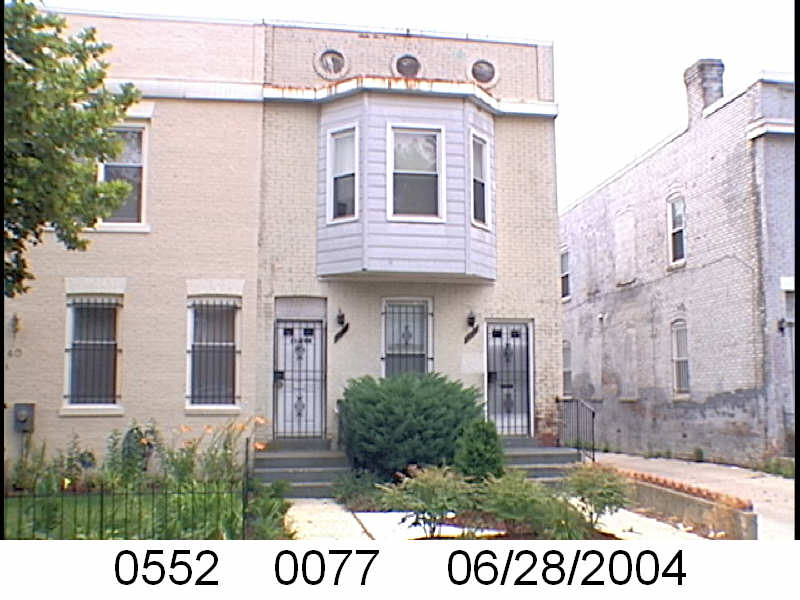The Washington Sanitary Improvement Company (WSIC) was a late 19th century charitable capitalism experiment that ended in the 1950s. This blog started looking at the homes that were supposed to be sold to African American home buyers, after decades of mainly renting to white tenants.
Looking at WSIC properties they tend to have a pattern where the properties were sold to a three business partners, Nathaniel J. Taube, Nathan Levin and James B. Evans as the Colonial Investment Co. for $3 million dollars. Those partners sold to African American buyers. There was usually a foreclosure. Then the property wound up in the hands of George Basiliko and or the DC Redevelopment Land Agency (RLA). Then there were the odd lucky ones who managed to avoid that fate.

Let’s see what happens with 1543 3rd St NW:
- December 1950 (recorded Jan 18, 1951) Evans, Levin and Taube sold one-half of 1543 3rd NW to Pearl L. and William A. Nixon.
- December 1950 (recorded Jan 18, 1951) the Nixons borrowed $3,375 from Colonial Investment Co. favorite trustees Abraham H. Levin and Robert G. Weightman.
- December 1950 (recorded Jan 18, 1951) Evans, Levin, and Taube sold the other half of 1543 3rd St NW to Ms. Dorothy J. Snowden, a divorcee.
- December 1950 Ms. Snowden borrowed $3,375 from trustees Abraham H. Levin and Robert G. Weightman.
- October 1961 the Nixons were released from their mortgage and owned their half free and clear.
- May 1964 Ms. Snowden was released from her mortgage and owned her half free and clear.
- December 1965 Ms. Snowden sold her half to George Basiliko….. sigh.
- October 1977 Basiliko sold his half to Cathleen Marie Tate, Francine Louise, and John Tate.
- October 1977 the Tates borrowed $5,300 at 9% APR from trustees Leonard C. Collins and John M. Swagart.
- August 1990 the estate of Pearl L. Mullen and William J. Nixon sold the other half to Tates.
This was a decent one…. until Ms. Snowden sold her half to Geo. Basiliko. Both original buyers managed to pay off their loans within 10-13 years.
In the 1950 census husband and wife William and Pearl Nixon lived at 619 Q St. NW in the lower unit. William was an AfAm hospital janitor, his wife was a homemaker and they lived with 2 roomers. William married Pearl Lillian Garner in 1924 in Guilford, NC. By the 1930 census they were in Washington, DC living at 1416 New Jersey Ave NW with their 4 year old son William James Calvin Nixon. During World War II they lived at 1721 11th St NW.
Their neighbor Dorothy Jacqueline Wallace was born July 13, 1927 in Woodville, VA. At some point she married Bernard M. Snowden Jr. They had three sons and a daughter. She died in 1989 and it appears she managed to avoid several censuses.










